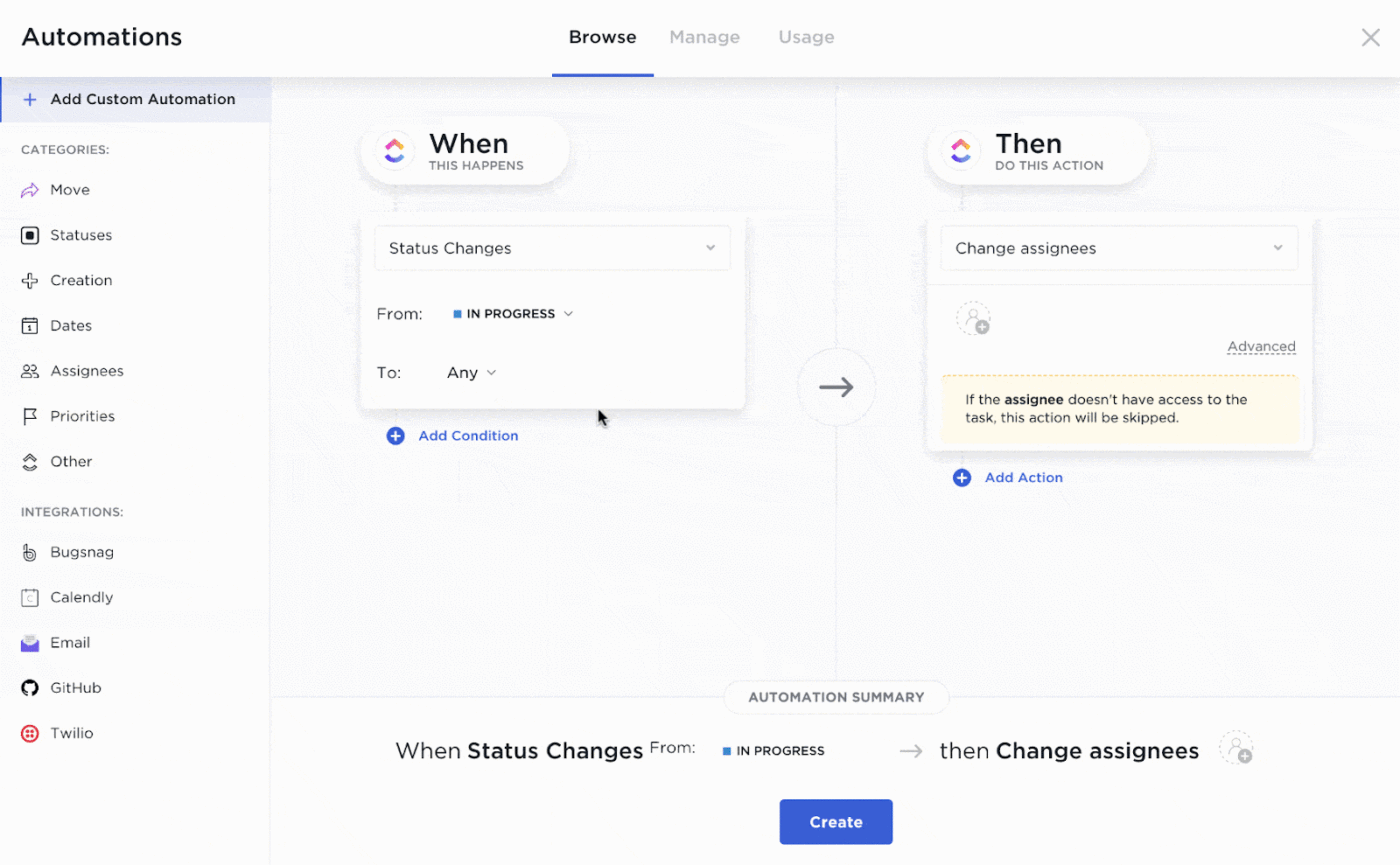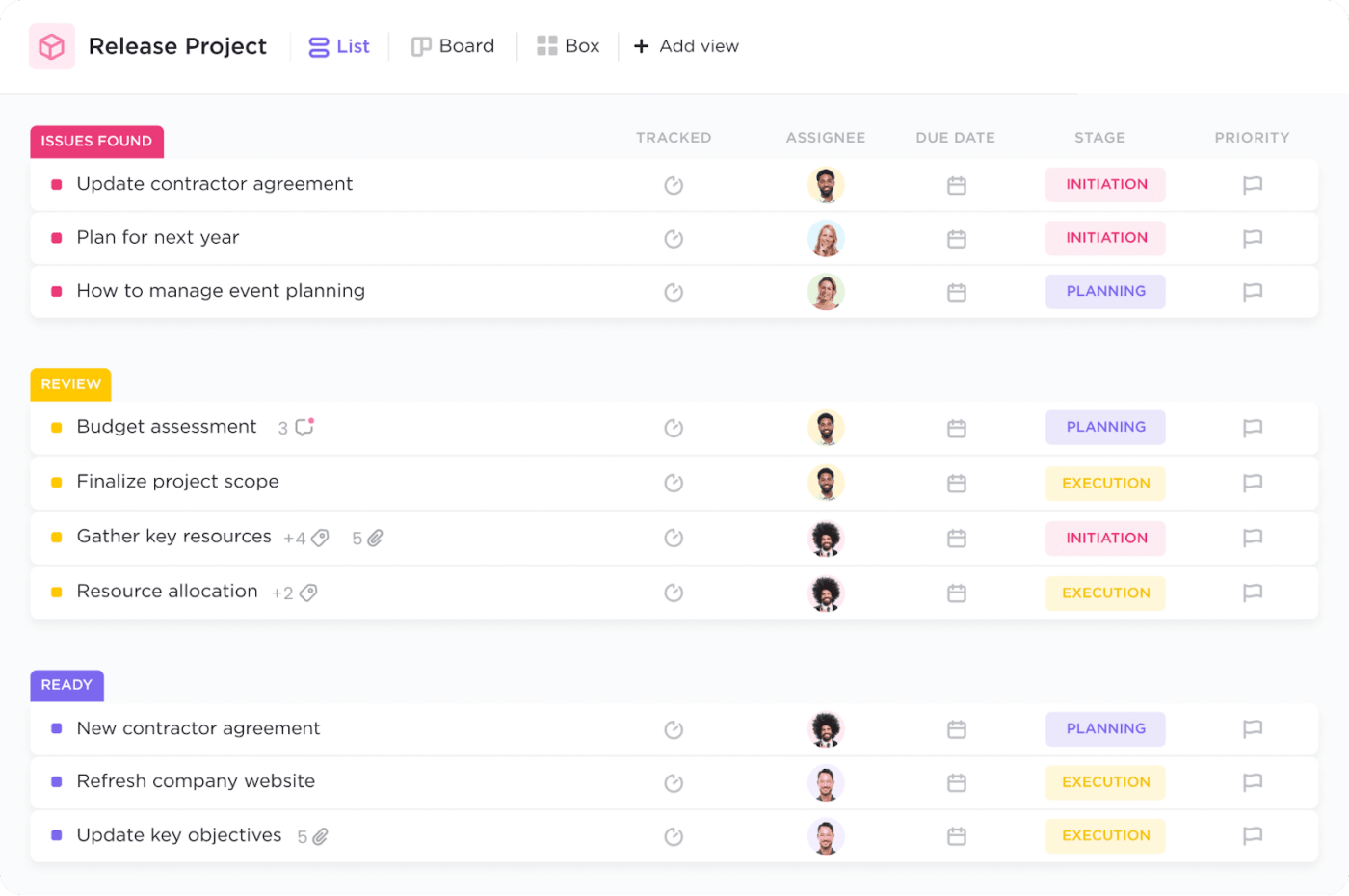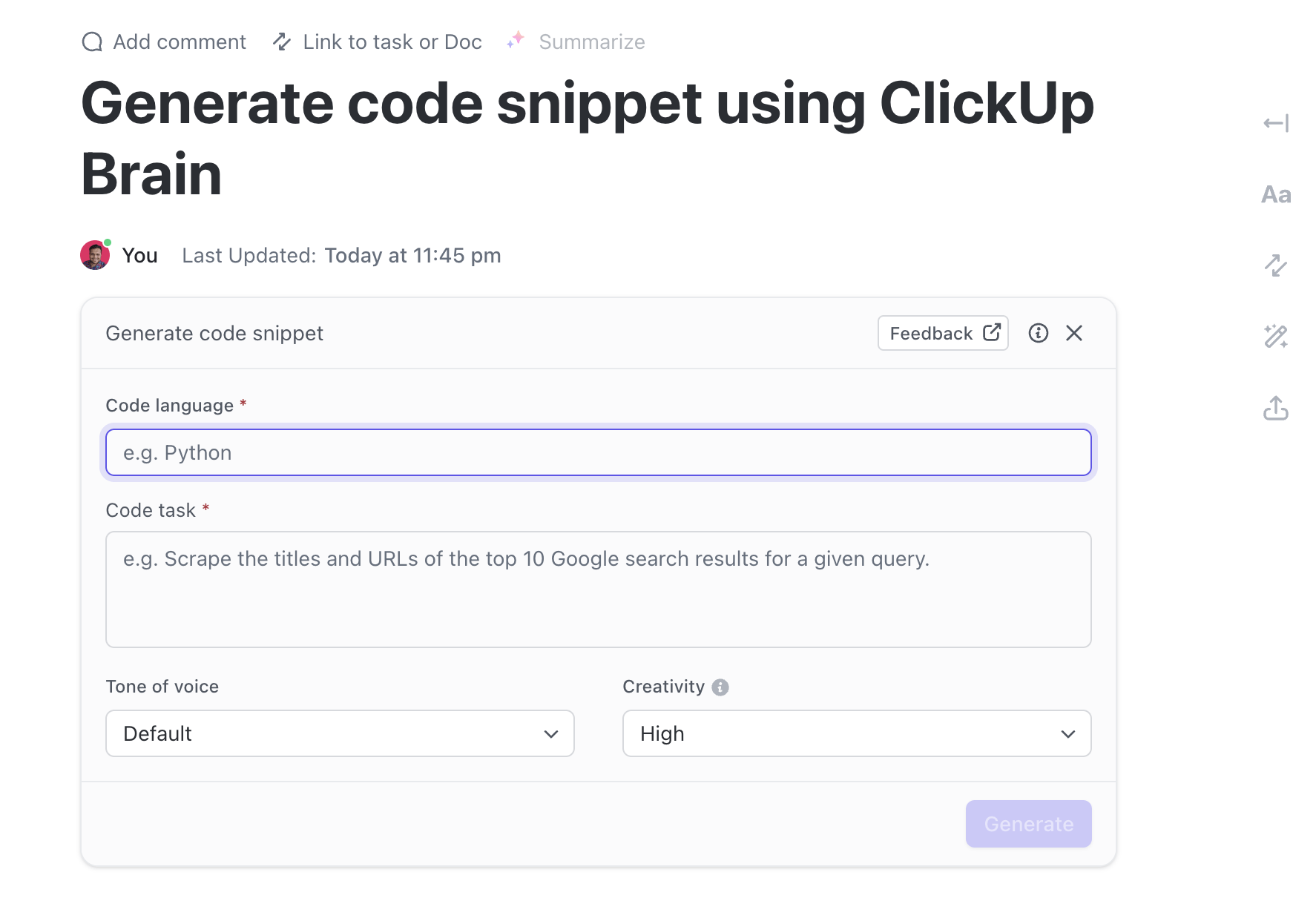هل سبق لك أن فكرت في دمج الذكاء الاصطناعي في تواجدك التجاري عبر الإنترنت؟
يمكن أن تضر تجربة العميل المتوسطة بميزة عملك على منافسيه. واليوم، يهدف أصحاب الأعمال إلى تجاوز التوقعات ونثر لحظات من البهجة على طول رحلة العميل.
يسهّل الذكاء الاصطناعي تحسين الجوانب المختلفة لموقعك الإلكتروني بحيث يمكنك تقديم تجربة أفضل لزوارك وعملائك. ستجد أدوات الذكاء الاصطناعي مفيدة لتلبية احتياجات جمهورك بكفاءة.
يقوم الذكاء الاصطناعي بما يقوم به البشر - ولكن بشكل أسرع وأرخص وأكثر موثوقية.
ولكن كيف تبدأ في الاستفادة منه؟
الأمر بسيط. قم بتطبيق الذكاء الاصطناعي في موقعك الإلكتروني بإحدى الطرق التالية:
- تحسين تجربة المستخدم
- تحسين المواقع الإلكترونية
- دمج الذكاء الاصطناعي في منصات التجارة الإلكترونية
- تعزيز أمان الموقع الإلكتروني
- استخدام الذكاء الاصطناعي لإنشاء المحتوى
اليوم، سنستعرض سبب حاجتك لدمج الذكاء الاصطناعي، والإيجابيات والسلبيات، وكيفية دمج الذكاء الاصطناعي في موقع إلكتروني.
دعنا ندخل في الموضوع مباشرةً.
ما هو الذكاء الاصطناعي؟
الذكاء الاصطناعي (AI) هو مجال واسع من علوم الكمبيوتر يهتم بإنشاء آلات ذكية قادرة على أداء المهام التي تتطلب عادةً ذكاءً بشريًا.
يميز الذكاء الاصطناعي قدرته على معالجة اللغة الطبيعية لفهم اللغة واتخاذ قرارات مستقلة. ألقِ نظرة على الميزات:
- تحليل النص: تستطيع معالجة اللغات الطبيعية تحليل النص إلى وحدات بنائه، بما في ذلك الكلمات والجمل وأجزاء الكلام (مثل الأسماء والأفعال)
- التعرّف على الكيانات المسماة (NER): تحدد هذه الميزة وتصنف كيانات معينة داخل البيانات النصية، مثل الأشخاص والمنظمات والمواقع والتواريخ والقيم النقدية
- تحليل المشاعر: تحلل البرمجة اللغوية العصبية النبرة العاطفية للنص، وتقيس ما إذا كانت إيجابية أو سلبية أو محايدة
- تلخيص النص: يمكن للبرمجة اللغوية العصبية اللغوية العصبية تلخيص أجزاء طويلة من النص إلى ملخصات موجزة، واستخراج النقاط الرئيسية
- الترجمة الآلية: تسمح هذه الميزة للبرمجة اللغوية العصبية بترجمة النص من لغة إلى أخرى.
- التعرف على الكلام: تقوم البرمجة اللغوية العصبية بتحويل اللغة المنطوقة إلى نص مكتوب، مما يتيح تطبيقات مثل المساعد الصوتي
- توليد النصوص: البرمجة اللغوية العصبية للنصوص القابلة للاستخدام مثل النصوص البشرية، مثل أوصاف المنتجات أو روبوتات الدردشة التي يمكنها إجراء محادثات.
- وضع علامات على أجزاء الكلام: تقوم البرمجة اللغوية العصبية بتعيين تسمية نحوية (على سبيل المثال، اسم، فعل، صفة) لكل كلمة في الجملة، مما يساعد في فهم بنية الجملة
- التحليل النحوي: تتعمق هذه الميزة في بنية الجملة، وتحلل كيفية ارتباط الكلمات ببعضها البعض والقواعد النحوية العامة
اقرأ أيضًا: ما يجب معرفته
_/مرجع/ مدونة؟ ص=119518_ مسرد مصطلحات الذكاء الاصطناعي %/%href/_
## فهم الذكاء الاصطناعي في سياق الويب
لقد عرفنا ما يعنيه الذكاء الاصطناعي، ولكن ما مدى ارتباطه بتواجد عملك على الويب؟
دعنا نفهم الأدوار التي يلعبها الذكاء الاصطناعي والتعلم الآلي (ML) في المواقع الإلكترونية والجوانب الأخرى، مثل معالجة اللغة الطبيعية، التي تساعد الذكاء الاصطناعي على فهم السياق وتوليد المخرجات بناءً على المدخلات البشرية.
دور الذكاء الاصطناعي في تطوير الويب
أصبحت المواقع الإلكترونية أكثر ذكاءً وأسرع في الإنشاء وأكثر سهولة في الاستخدام من خلال أدوات الذكاء الاصطناعي. مساهمات الذكاء الاصطناعي في تصميم الويب وتحسين محرك البحث والتطوير متعددة الأوجه. فيما يلي تفصيل ذلك:
- تبسيط عملية التطوير: يمكن للذكاء الاصطناعي أتمتة عمليات الترميز المتكررة مثل اقتراح إكمال التعليمات البرمجية وإنشاء التعليمات البرمجية النمطية وتحديد الأخطاء المحتملة
- تعزيز تجربة المستخدم: يعمل الذكاء الاصطناعي على تخصيص رحلات المستخدمين من خلال تخصيص المحتوى والتوصيات والواجهات بناءً على التفضيلات والسلوكيات الفردية. يستمتع كل مستخدم من المستخدمين بتجربة أكثر تفاعلية وملاءمة
- تحسين الأداء واستراتيجية المحتوى: يمكن للذكاء الاصطناعي تحليل بيانات المستخدم وأداء الموقع الإلكتروني لتوفير رؤى قيّمة حول تصميم الموقع الإلكتروني واستراتيجية المحتوى والحملات التسويقية. علاوة على ذلك، يمكنك استخدام أدوات مدعومة بالذكاء الاصطناعي لإنشاء تنسيقات محتوى مثل منشورات المدونة ومقتطفات التعليمات البرمجية
- الابتكار والإمكانات المستقبلية: يتيح الذكاء الاصطناعي الآن وظيفة البحث الصوتي للمستخدمين للتفاعل مع موقعك الإلكتروني باستخدام اللغة الطبيعية. ويمكن لخوارزمياته مراقبة سلوكهم لاقتراح واجهات مستخدمين جذابة بصريًا وسهلة الاستخدام
إنشاء مقتطف رمز باستخدام ClickUp Brain
- إنشاء المحتوى وتنظيمه: يساعد تعلّم الآلة في المحتوى من خلال إنشاء تنسيقات مختلفة مثل مقتطفات التعليمات البرمجية ومقالات الويب ونسخة المبيعات
- البحث واسترجاع المعلومات: يعمل التعلم الآلي على تشغيل وظائف البحث الذكي التي تفهم قصد المستخدم والسياق لجلب نتائج بحث أكثر دقة وملاءمة
- الأمان والصيانة: يكتشف تعلّم الآلة سلوك المستخدم غير المعتاد أو أنماط حركة المرور غير المعتادة، مما قد يشير إلى تهديدات أمنية أو أنشطة ضارة
## إيجابيات وسلبيات دمج الذكاء الاصطناعي في موقعك الإلكتروني
إن دمج الذكاء الاصطناعي في مختلف المنصات والتطبيقات يؤثر على كيفية تفاعلنا مع التكنولوجيا والتعامل مع المهام المختلفة.
المزايا الرئيسية لاستخدام الذكاء الاصطناعي في موقعك الإلكتروني:
1. تعزيز الكفاءة والإنتاجية
يمكن أن يساعد الذكاء الاصطناعي في أتمتة المهام المتكررة والمستهلكة للوقت لتوفير الوقت وتعزيز الإنتاجية في مختلف الصناعات والأنشطة. فهو يجعل القرارات المستندة إلى البيانات ممكنة من خلال تحليل كميات هائلة من البيانات لتحديد الأنماط والاتجاهات. وهذا يسمح ببذل جهود أكثر موضوعية ودقة وتحسينها لتحقيق النجاح.
2. تحسين تجربة المستخدم (UX)
يمكنك إضفاء طابع شخصي على تجارب المستخدم من خلال تخصيص محتوى الموقع الإلكتروني والتوصيات والواجهات للمستخدمين الأفراد بناءً على تفضيلاتهم وسلوكهم. توفير دعم العملاء على مدار الساعة وطوال أيام الأسبوع، والإجابة عن الأسئلة، وحل المشكلات، ومساعدة المستخدمين باستخدام أدوات مدعومة بالذكاء الاصطناعي. سيجد المستخدمون منصتك أكثر ملاءمة وفعالية في أي وقت وفي أي مكان.
3. الابتكار والإمكانيات الجديدة
يمكن للذكاء الاصطناعي مساعدتك في أتمتة المهام التي كانت تُعتبر في السابق معقدة أو صعبة للغاية بالنسبة للآلات.
يمكن أن يبدأ الإلهام بالابتكار في أي وقت! تسمح قدرة الذكاء الاصطناعي على تحليل كميات هائلة من البيانات وتحديد الأنماط باكتشاف رؤى وحلول جديدة قيّمة للمشاكل المعقدة.
4. زيادة السلامة والأمان
باستخدام الذكاء الاصطناعي والتعلّم الآلي، يمكنك تحليل بياناتك و تحديد الأنماط التي تشير إلى الأنشطة الاحتيالية لمنع الجرائم المالية والهجمات الإلكترونية. حماية كل من المستخدمين والمؤسسات لديك من الأنشطة الضارة.
العيوب المحتملة وكيفية التعامل معها
على الرغم من أن تكامل الذكاء الاصطناعي يوفر العديد من الفوائد، إلا أنه من الضروري إدراك عيوبه المحتملة وتنفيذ تدابير للتخفيف منها:
1. التحيز والتمييز
يمكن أن تؤدي خوارزميات الذكاء الاصطناعي إلى إدامة التحيزات المجتمعية إذا تم تدريبها على بيانات تعكس تلك التحيزات. ويمكن أن يؤدي ذلك إلى نتائج تمييزية في مجالات مثل الموافقات على القروض وممارسات التوظيف والعدالة الجنائية.
كيفية التعامل مع:
- تنفيذ عمليات قوية لتنقية البيانات والتحقق من نزاهتها لضمان عدم تحيز بيانات التدريب.
- إجراء تدقيق منتظم لأنظمة الذكاء الاصطناعي بحثًا عن التحيز وتطوير آليات لمعالجة أي مشاكل يتم تحديدها والتخفيف من حدتها.
2. إزاحة الوظائف
من المحتمل أن تؤدي أتمتة الذكاء الاصطناعي إلى إزاحة وظائف محددة، لا سيما تلك التي تنطوي على مهام متكررة. ويثير ذلك مخاوف بشأن البطالة والحاجة إلى إعادة تدريب القوى العاملة.
كيفية التعامل مع:
- الاستثمار في برامج التعليم والتدريب لتزويد الأفراد بالمهارات اللازمة للازدهار في الاقتصاد القائم على الذكاء الاصطناعي.
- تشجيع التعاون بين البشر والذكاء الاصطناعي، حيث يستفيد البشر من إبداعهم ومهاراتهم في حل المشكلات إلى جانب كفاءة الذكاء الاصطناعي وقدراته في تحليل البيانات.
3. الافتقار إلى الشفافية والتفسير
قد يكون من الصعب فهم نماذج الذكاء الاصطناعي المعقدة، مما يجعل من الصعب شرح عمليات اتخاذ القرار الخاصة بها. يمكن أن يثير هذا الافتقار إلى الشفافية مخاوف بشأن المساءلة والإنصاف.
كيفية التعامل مع:
- تطوير وتنفيذ تقنيات الذكاء الاصطناعي القابلة للتفسير التي تجعل عمليات اتخاذ القرار في الذكاء الاصطناعي أكثر شفافية ومفهومة.
- إعطاء الأولوية لتطوير أنظمة ذكاء اصطناعي قابلة للتدقيق والسماح بالإشراف والتدخل البشري عند الضرورة.
4. الاعتبارات الأخلاقية
يثير تطوير الذكاء الاصطناعي ونشره العديد من المخاوف الأخلاقية، مثل إساءة الاستخدام المحتملة للمراقبة، وانتهاك الخصوصية، وتطوير أسلحة ذاتية التشغيل.
كيفية التعامل مع:
- إنشاءحوكمة الذكاء الاصطناعي لتطوير الذكاء الاصطناعي ونشره.
- تعزيز الحوار المفتوح والمشاركة العامة لضمان استخدام الذكاء الاصطناعي بشكل مسؤول وأخلاقي لصالح المجتمع.
5. مخاطر الأمن والسلامة
يمكن أن تكون أنظمة الذكاء الاصطناعي معرضة للاختراق والتلاعب، مما قد يؤدي إلى انتهاكات أمنية ومخاطر تتعلق بالسلامة.
كيفية التعامل مع:
- تنفيذ تدابير قوية للأمن السيبراني لحماية أنظمة الذكاء الاصطناعي من الهجمات الإلكترونية.
- إعطاء الأولوية لتطوير أنظمة ذكاء اصطناعي آمنة وموثوقة تقلل من المخاطر المحتملة على الأفراد والمجتمع.
## طرق مختلفة لاستخدام الذكاء الاصطناعي على المواقع الإلكترونية
تدمج معظم المواقع الإلكترونية الكبرى الذكاء الاصطناعي (AI) اليوم لأسباب محددة. يمكنه تحسين تجربة المستخدم في موقعك الإلكتروني، وتحسين أداء الموقع الإلكتروني، ودفع نمو الأعمال. فيما يلي تفصيل لكيفية القيام بذلك:
1. محركات التوصيات
التوصية بالمنتجات أو المقالات أو مقاطع الفيديو بناءً على تفاعلات المستخدم السابقة، كما تفعل أمازون. توصي أمازون بالمنتجات بناءً على مشترياتك السابقة وسجل التصفح والتقييمات من خلال الذكاء الاصطناعي.
تقوم خوارزميات التعلُّم الآلي بتحليل بيانات سلوك المستخدم، بما في ذلك سجل التصفُّح والنقرات واستعلامات البحث. استخدمها لضبط تخطيطات الموقع الإلكتروني وتحديد أولويات المحتوى بناءً على تفضيلات المستخدم. يمكنك أيضاً تحسين نتائج البحث بناءً على نية المستخدم وعمليات البحث السابقة.
جمع بيانات المستخدم وفحصها، مثل سجل التصفح وسلوك الشراء والتركيبة السكانية. بناءً على هذه الرؤى، أوصِ بالمنتجات ذات الصلة، مما يزيد من احتمالية التحويلات ورضا العملاء.

عبر أمازون
2. روبوتات الدردشة الذكية والمساعدين الافتراضيين
تقديم خدمة العملاء الأساسية أو الإجابة عن الأسئلة المتداولة من خلال روبوتات الدردشة الآلية. تتيح البرمجة اللغوية العصبية لروبوتات الدردشة فهم استفسارات المستخدم المصاغة بلغة طبيعية.
استخدم أدوات المحادثة المدعومة بالذكاء الاصطناعي لتأهيل العملاء المحتملين وجدولة المواعيد. تمت برمجة روبوتات الدردشة الآلية الخاصة بسيفورا للإجابة عن أسئلة العملاء حول المنتجات، والتوصية بالمكياج بناءً على لون البشرة، وحتى المساعدة في تحديد مواعيد لخدمات التجميل.
على سبيل المثال، على غرار سيفورا، يمكنك توجيه المستخدمين نحو المنتجات أو الخدمات ذات الصلة بناءً على محادثاتهم مع روبوت الدردشة.
3. تخصيص المحتوى المدعوم بالذكاء الاصطناعي
يمكنك تحليل كميات هائلة من البيانات وتحديد الأنماط لإنشاء محتوى باستخدام تعلّم الآلة. استخدمه لإنشاء الخطوط العريضة أو صياغة المحتوى بناءً على الموضوعات الشائعة أو اهتمامات المستخدم.
أنشئ أوصافاً مخصصة للمنتجات تلقى صدى لدى شرائح مختلفة من المستخدمين. استناداً إلى تفضيلات المستخدم، يمكنك اقتراح مقالات أو مقاطع فيديو أو محتوى وسائل التواصل الاجتماعي ذات الصلة.
يُعد Persado مثالاً ممتازاً لمنصة مدعومة بالذكاء الاصطناعي يمكنها مساعدتك في تخصيص وإنشاء محتوى تسويقي أكثر ملاءمة وجاذبية.

عبر بيرسادو استخدمه لتحليل كميات هائلة من البيانات، بما في ذلك البيانات الديموغرافية والنفسية والسلوكية للعملاء، لتحديد اللغة والرسائل الأكثر فعالية لكل شريحة من العملاء.
اضبط الأسعار وقدِّم عروضاً ترويجية مخصصة بناءً على اتجاهات السوق وتحليل المنافسين وسلوك المستخدمين. استخدم هذه الاستراتيجيات لتحسين استراتيجيات التسعير الخاصة بك و زيادة مبيعات التجارة الإلكترونية 😃.
4. الرؤى المستندة إلى البيانات والتحسين
قم بتحليل بيانات حركة المرور على موقعك الإلكتروني، وسلوك المستخدم، ومعدلات التحويل من خلال التعلم الآلي وتحسين اختبار A/B. الحصول على رؤى حول نوايا بحث المستخدم وتحسين محتوى الموقع الإلكتروني لتحسين تصنيفات محرك البحث.
استخدم الرؤى لتحليل أداء الحملة واستهداف الموارد نحو الاستراتيجيات الأكثر فعالية.
تستفيد منصة SurveyMonkey، وهي منصة استبيانات شهيرة، من الذكاء الاصطناعي لتجاوز مجرد جمع البيانات. تعمل تقنية الذكاء الاصطناعي الخاصة بهم على تصنيف الردود النصية تلقائيًا على أنها إيجابية أو سلبية أو محايدة.
تخيل تحليل مئات الأسئلة المفتوحة حول رضا العملاء. يمكن أن يساعدك الذكاء الاصطناعي في فرز المشاعر، مما يسمح بفهم سريع لتصور العملاء بشكل عام.
تقوم فرق المبيعات بالتوفيق بين العديد من العملاء المحتملين، ولكنك تريد أن تجعل عملية الإغلاق أكثر سهولة. استخدم الذكاء الاصطناعي لتحليل بيانات العملاء وتاريخ الشراء والسلوك عبر الإنترنت للتنبؤ باستعدادهم للمبيعات. يتيح لك ذلك تحديد أولويات العملاء المحتملين ذوي الإمكانات العالية وتخصيص الوقت بشكل استراتيجي.
5. الذكاء الاصطناعي لإنشاء المحتوى
مساعدو الكتابة بالذكاء الاصطناعي مثل ClickUp Brain يمكن أن يساعدك في جوانب مختلفة من إنشاء المحتوى وإدارة المحتوى، مثل:
- إدارة مشاريع الذكاء الاصطناعي: إرسال تحديثات المهام على مواقع الويب إلى أعضاء الفريق المعنيين تلقائيًا. تقليل الحاجة إلى الاجتماعات المستمرة أو رسائل البريد الإلكتروني. على سبيل المثال، يمكن إخطار المصممين عندما ينتهي المطورون من ترميز عنصر صفحة جديدة
- إدارة المعرفة بالذكاء الاصطناعي: قم بتركيز جميع معارفك المتعلقة بتطوير موقعك الإلكتروني داخل ClickUp. يمكن أن يشمل ذلك إرشادات التصميم ومعايير الترميز وأدلة نمط المحتوى. اجعل من السهل على الجميع العثور بسرعة على المعلومات التي يحتاجون إليها وضمان الاتساق عبر موقعك الإلكتروني
- إنشاء الخطوط العريضة والمسودات: قدم الموضوع والنقاط الرئيسية، ودع أداة الذكاء الاصطناعي تنشئ مخططًا أساسيًا أو حتى مسودة للمحتوى الخاص بك
- إعادة صياغة وتلخيص المحتوى الحالي: استخدم ClickUp Brain لإعادة صياغة المحتوى الحالي أو إنشاء ملخصات لمقالات أطول
- تحسين القواعد النحوية والأسلوب: التدقيق اللغوي باستخدام ClickUp Brain بحثًا عن الأخطاء النحوية والأخطاء المطبعية، وتحسين بنية الجملة وجودة المحتوى بشكل عام

استخدم ClickUp Brain للاهتمام بجميع مهامك المتعلقة بالذكاء الاصطناعي، كل شيء بدءًا من الكتابة إلى الأعمال الإدارية
## كيفية دمج الذكاء الاصطناعي في موقع إلكتروني
يمكن أن يؤدي دمج الذكاء الاصطناعي في موقعك الإلكتروني إلى تحسين تجربة المستخدم ومشاركته ووظائفه بشكل كبير.
دعنا نلقي نظرة على كيفية دمج الذكاء الاصطناعي في موقع إلكتروني لتحقيق أهداف عملك.
كيفية دمج الذكاء الاصطناعي في تطوير تطبيقات الويب
الخطوة 1: افهم ما تريد تحقيقه من خلال دمج الذكاء الاصطناعي في موقعك الإلكتروني.
هل تهدف إلى تحسين تفاعلات المستخدم، أو تخصيص المحتوى، أو أتمتة المهام، أو تحسين أداء الموقع الإلكتروني؟
الخطوة 2: حدِّد مجالات معينة داخل تطبيق الويب الخاص بك حيث يمكن للذكاء الاصطناعي أن يضيف قيمة.
ضع في اعتبارك المهام التي تنطوي على إجراءات متكررة، أو تتطلب اتخاذ قرارات ذكية، أو تستفيد من التخصيص.
الخطوة 3: ابحث عن تقنيات وأدوات الذكاء الاصطناعي المختلفة المتاحة، مع الأخذ في الاعتبار عوامل مثل الوظائف وسهولة التكامل والتوافق مع بيئة التطوير لديك. تشمل الخيارات الشائعة ما يلي:
- التعلم الآلي (ML): للتعرف على الصور والتحليلات التنبؤية وأنظمة التوصيات
- معالجة اللغات الطبيعية (NLP): لإنشاء روبوتات الدردشة الآلية وتحليل المشاعر وإنشاء المحتوى الآلي
- رؤية الحاسب الآلي: لمهام مثل تحليل الصور والفيديو، واكتشاف الأشياء، والتعرف على الوجه
اختر الأدوات التي تلبي احتياجاتك ومهاراتك الخاصة. تقدم بعض الخيارات واجهات سهلة الاستخدام ونماذج مبنية مسبقًا، بينما تتطلب بعض الخيارات الأخرى المزيد من الخبرة التقنية للتخصيص.
ستختلف عملية التكامل حسب التقنية التي اخترتها وإطار التطوير الذي اخترته. فبعض الأدوات، مثل ClickUp، توفر واجهات برمجة التطبيقات أو حزم تطوير البرمجيات SDK التي تبسّط عملية التكامل، بينما قد يتطلب البعض الآخر تطوير كود مخصص.
العديد من أدوات تسويق الذكاء الاصطناعي واستراتيجيات التسويق تتطلب بيانات تدريب لتعمل بفعالية. اجمع مجموعات البيانات ذات الصلة التي تمثل بدقة المستخدمين المستهدفين والمهام التي سيتعامل معها نموذج الذكاء الاصطناعي الخاص بك.
قم بتدريب واختبار نموذج الذكاء الاصطناعي الخاص بك بشكل صارم لضمان الدقة والأداء واتخاذ قرارات خالية من التحيز. مراقبة نماذجك وتحسينها باستمرار بناءً على تفاعلات المستخدمين وبيانات الأداء.
بمجرد دمجها، راقب باستمرار أداء وتأثير ميزات الذكاء الاصطناعي الخاصة بك. تتبع تفاعل المستخدم، وحلل البيانات بشكل أكبر، واجمع ملاحظات المستخدمين، وحدد مجالات التحسين.
كن مستعدًا ل تطوير وتكييف تطبيق الذكاء الاصطناعي الخاص بك بناءً على سلوك المستخدم واتجاهات السوق والتطورات في تكنولوجيا الذكاء الاصطناعي.
ميزات مدعومة بالذكاء الاصطناعي يمكن تنفيذها على موقع إلكتروني
فيما يلي بعض الميزات المدعومة بالذكاء الاصطناعي التي يمكن تنفيذها، مصنفة حسب الغرض منها:
تعزيز تجربة المستخدم تحسين تجربة المستخدم
- التخصيص: التوصية بالمنتجات أو المحتوى أو الخدمات بناءً على تفضيلات المستخدم وسجل التصفح والسلوك السابق
- روبوتات المحادثة: تقديم دعم العملاء على مدار الساعة طوال أيام الأسبوع، والإجابة على الأسئلة المتكررة، ومساعدة المستخدمين في المهام
- البحث والتوصيات: تقديم اقتراحات بحث ذكية ونتائج بحث مخصصة وتوصيات بالمنتجات بناءً على نية المستخدم وسلوكه
- ميزات إمكانية الوصول: إنشاء أوصاف نصية بديلة للصور، وترجمة المحتوى إلى لغات مختلفة، وتوفير التنقل بالتحكم الصوتي للمستخدمين ذوي الإعاقة
تحسين المحتوى والأداء
- إنشاء المحتوى: إنشاء تنسيقات محتوى مختلفة مثل أوصاف المنتجات أو منشورات المدونة أو مقتطفات التعليمات البرمجية، مما يوفر وقت التطوير وكتابة المحتوى
- تنظيم المحتوى: تخصيص موجزات المحتوى واقتراح مقالات أو مقاطع فيديو أو أخبار ذات صلة بناءً على تفضيلات المستخدم واهتماماته
- اختبار A / B والتحسين: أتمتة اختبار A / B من خلال تحليل بيانات المستخدم واقتراح أكثر تخطيطات الموقع الإلكتروني أو الميزات أو أشكال المحتوى فعالية
- تحليل البيانات والرؤى الذكية: تحليل بيانات المستخدم وأداء الموقع الإلكتروني لتحديد الاتجاهات,تحسين تصميم الموقع الإلكترونيواستراتيجية المحتوى والحملات التسويقية
تبسيط العمليات والأمان

وفر الوقت وأتمتة المهام بكفاءة مع أتمتة ClickUp Automation
- المهام المؤتمتة: أتمتة المهام المتكررة مثل إدخال البيانات ومعالجة النماذج والجدولة، مما يوفر الموارد البشرية لأعمال أكثر تعقيدًا
- الكشف عن الحالات الشاذة ومنع التهديدات: تحديد سلوك المستخدم غير المعتاد أو أنماط حركة المرور التي قد تشير إلى تهديدات أمنية أو أنشطة احتيالية
- الصيانة التنبؤية: التنبؤ بالمشكلات المحتملة في الموقع الإلكتروني مثل التحميل الزائد على الخادم أو أعطال الأجهزة، مما يتيح الصيانة الاستباقية وتقليل وقت التعطل
- الإشراف على المحتوى: تحديد المحتوى غير اللائق أو التعليقات غير المرغوب فيها أو اللغة الضارة وإزالتها تلقائيًا، مما يعزز بيئة آمنة وإيجابية على الإنترنت
كيف يمكن أن يتوافق تكامل الذكاء الاصطناعي مع أهداف العمل
تعد مواءمة تكامل الذكاء الاصطناعي مع أهداف عملك أمرًا بالغ الأهمية لضمان تقديم قيمة حقيقية والمساهمة في النجاح. إليك كيفية تحقيق المواءمة الفعالة:
تحديد أهداف عملك
ابدأ بتحديد أهداف عملك وغاياته بشكل واضح. قد تشمل هذه الأهداف زيادة المبيعات أو تحسين رضا العملاء أو تبسيط العمليات أو دخول أسواق جديدة.
تحديد التطبيقات المحتملة للذكاء الاصطناعي
قم بتحليل أهداف عملك وعملياتك لتحديد المجالات التي يمكن للذكاء الاصطناعي أن يضيف قيمة لها. ضع في اعتبارك المهام التي تتضمن:
- العمليات التكرارية أو العمليات التي تعتمد على البيانات: يتفوق الذكاء الاصطناعي في أتمتة هذه المهام، مما يوفر الموارد البشرية ويحسن الكفاءة
- اتخاذ القرارات: يمكن للذكاء الاصطناعي تحليل كميات هائلة من البيانات لتحديد الأنماط والاتجاهات، مما يوفر رؤى لاتخاذ قرارات مستنيرة
- إضفاء الطابع الشخصي: يسمح الذكاء الاصطناعي بتخصيص التجارب والتوصيات للعملاء الأفراد، مما يعزز المشاركة والرضا
اختيار أدوات وتقنيات الذكاء الاصطناعي المناسبة
ابحث عن خيارات الذكاء الاصطناعي واختر الأدوات التي تتوافق مباشرةً مع مجالات التطبيق وأهداف العمل التي حددتها. ضع في اعتبارك عوامل مثل:
- الوظائف: هل تلبي أداة الذكاء الاصطناعي احتياجاتك وتحدياتك المحددة؟
- سهولة الاستخدام: هل يستطيع فريقك دمج حل الذكاء الاصطناعي المختار وإدارته بفعالية؟
- التكلفة وقابلية التوسع: هل يناسب الحل ميزانيتك ويسمح بالنمو والتكيف في المستقبل؟
تنفيذ النتائج ومراقبتها
دمج حل الذكاء الاصطناعي الذي تم اختياره في سير العمل لديك مع ضمان أمن البيانات والاعتبارات الأخلاقية المناسبة. راقب باستمرار أداء تطبيق الذكاء الاصطناعي وتأثيره على أهداف عملك. تتبع المقاييس الرئيسية مثل:
- مكاسب الكفاءة: هل أدت أتمتة الذكاء الاصطناعي إلى تقليل وقت المعالجة أو تحرير موارد الموظفين؟
- رضا العملاء: هل أدى تخصيص الذكاء الاصطناعي إلى تحسين مشاركة العملاء ورضاهم؟
- نمو الإيرادات: هل عززت التوصيات أو الحملات التسويقية المدعومة بالذكاء الاصطناعي المبيعات؟
التحسين والتكيف
استناداً إلى مراقبتك ونتائجك، كن مستعداً لتحسين تطبيق الذكاء الاصطناعي. قد يتضمن ذلك:
- تعديل تكوين نموذج الذكاء الاصطناعي الخاص بك.
- دمج ميزات الذكاء الاصطناعي الجديدة مع تطور أهداف عملك.
- معالجة أي مخاوف أخلاقية أو تحيز تم تحديدها.
## تبسيط سير عملك مع ClickUp
اجمع بين ميزات ClickUp والذكاء الاصطناعي القوية لتخطيط وتنفيذ مشروع تطوير أو تحسين موقع إلكتروني. أنشئ المحتوى، وقسّم المشروع إلى خطوات قابلة للتنفيذ، وتتبع التقدم الذي تحرزه. سواء أكنت بحاجة إلى معلومات فورية أو إرشادات للمشاريع المستقبلية، فإن ClickUp Brain يمكنه مساعدتك.
ClickUp Brain
جرب ClickUp Brain
ClickUp Brain يتيح لك إنشاء نقاط حوار للصفحات المقصودة، ومخططات المدونة، ونصوص الفيديو، والأسئلة الشائعة، وأي محتوى آخر مطلوب لتشغيل الموقع الإلكتروني بسرعة. يمكنك أيضًا تحريرها بشكل تعاوني مع فريقك في المستندات.
على افتراض أنك تتطلع إلى تنفيذ مشروع موقع إلكتروني، إليك بعض ميزات إدارة المهام العديدة لمساعدتك في تنسيق المشروع:
- ألواح بيضاء تعاونية لرسم أفكار الصفحات وخرائط الموقع
- مهام ومهام فرعية لتقسيم المشروع إلى خطوات يمكن إدارتها
- التعليقات وعرض الدردشة للتواصل السريع والسهل
- لوحات المعلومات لتتبع تقدم المهام والمشروع
النقر فوق لوحات المعلومات والمهام
احصل على رؤى في الوقت الفعلي لمشروعك باستخدام لوحات معلومات ClickUp Dashboards ClickUp Dashboards متعددة الاستخدامات لتصور بيانات المشروع وحالة المهام. ويمكنك دمج الذكاء الاصطناعي مع ClickUp لتحليل هذه البيانات وتقديم رؤى لإبلاغ قرارات الموقع الإلكتروني. على سبيل المثال، يمكن للذكاء الاصطناعي قراءة جميع بياناتك لتحديد عناصر الموقع الإلكتروني التي يتفاعل معها المستخدمون أكثر من غيرها أو الصفحات المقصودة التي تحقق أعلى معدلات تحويل. استخدم هذه المعلومات لتحسين تصميم موقعك الإلكتروني وتجربة المستخدم.

قم بتعيين جميع مهام فريقك ومراقبتها وتتبعها ضمن مساحة عمل واحدة من خلال ClickUp Tasks
باستخدام مهام ClickUp Tasks، يمكنك أتمتة كل شيء تقريبًا. وهذا يشمل تعيين المهام وتتبع التقدم المحرز وإدارة المواعيد النهائية. يمكن لمساعد المهام تحليل بيانات مشروعك أو التوصية بالموارد أو تحديد العوائق المحتملة.
## جلب قوة الذكاء الاصطناعي إلى موقعك الإلكتروني
يمكن للذكاء الاصطناعي تحسين تجربة المستخدم وأداء موقعك الإلكتروني بشكل كبير. بالإضافة إلى ذلك، يمكنك استخدام الذكاء الاصطناعي للتعامل مع الأعمال الشاقة لتطوير الموقع الإلكتروني وإدارته بحيث يتوفر لديك الوقت لمزيد من الأنشطة الاستراتيجية والإبداعية.
يمكن أن تساعدك أداة إدارة المشاريع المدعومة بالذكاء الاصطناعي مثل ClickUp على إدارة مشروع الموقع الإلكتروني بكفاءة وضمان إنجاز العمل كما هو مخطط له. وسواء كنت تعمل بمفردك أو تدير فريق عمل مشغول، يمكنك توفير الكثير من الوقت والجهد باستخدام ClickUp. علاوةً على ذلك، يمكنك الاستعانة بمصادر خارجية لمهام إنشاء وإدارة النسخ والمحتوى المعتادة إلى ClickUp Brain، مما يوفر وقتك ويسرّع الجداول الزمنية للمشروع. ابدأ مع ClickUp اليوم مجانًا!



